




Did you find this useful? Give us your feedback




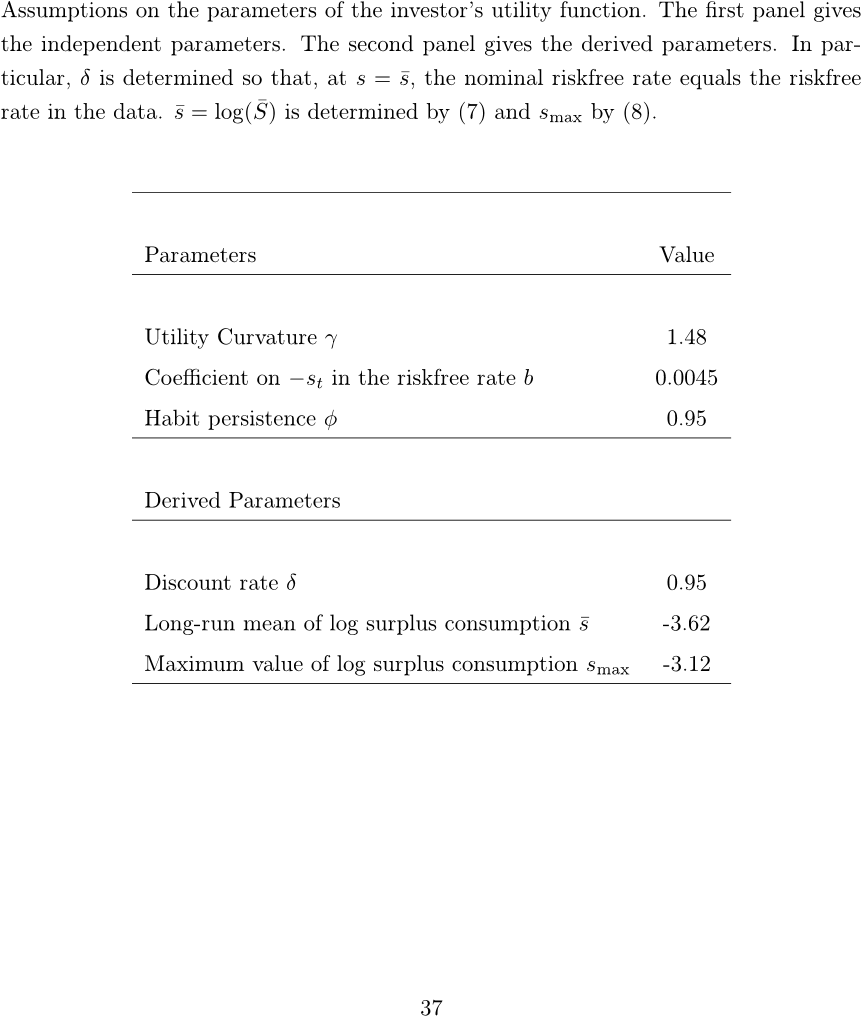
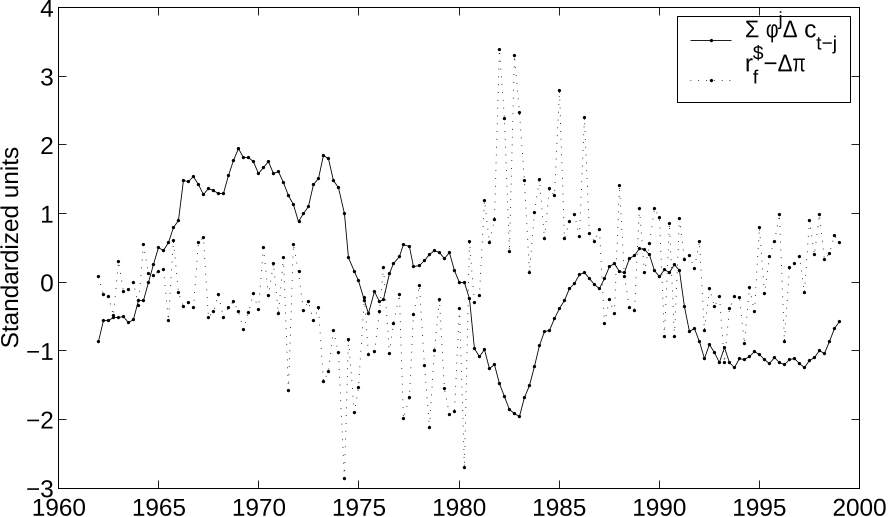

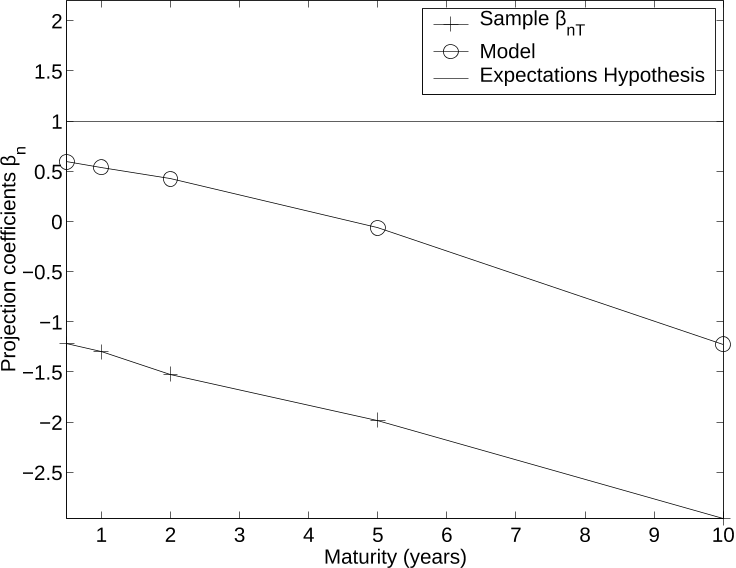
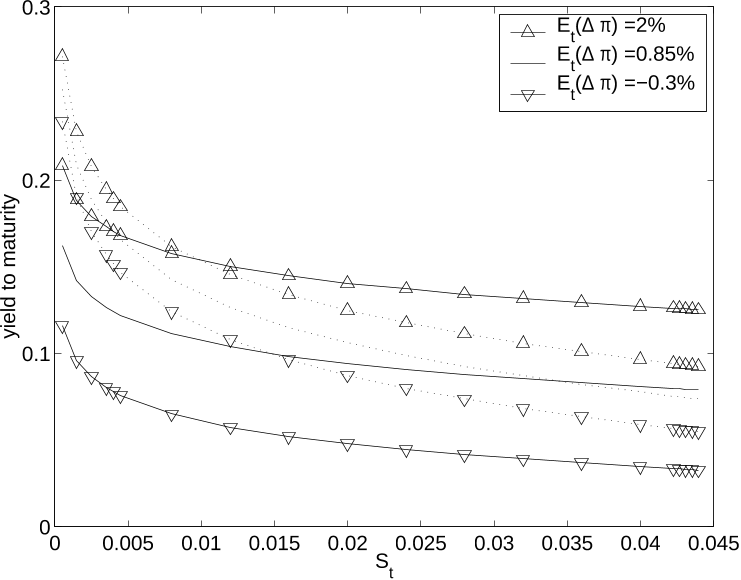

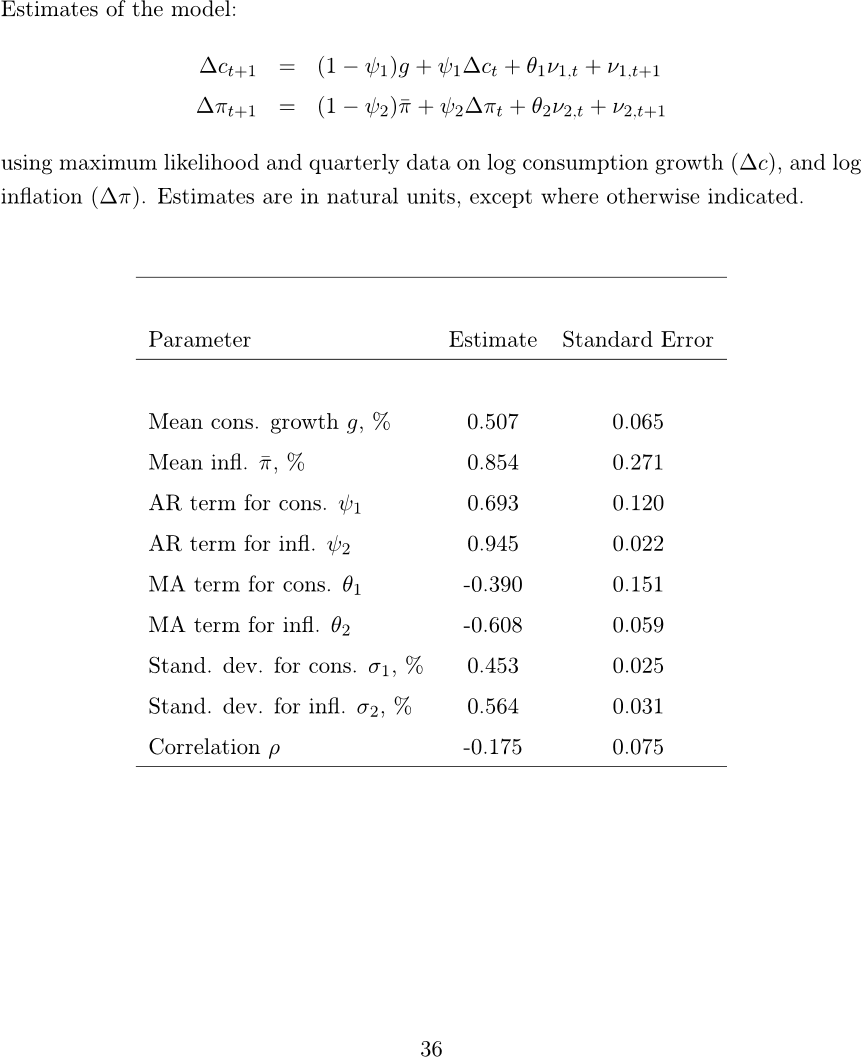
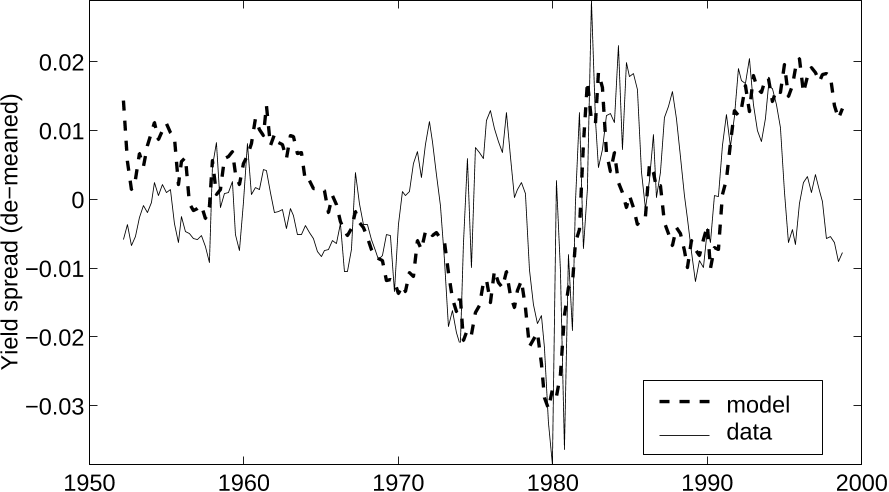
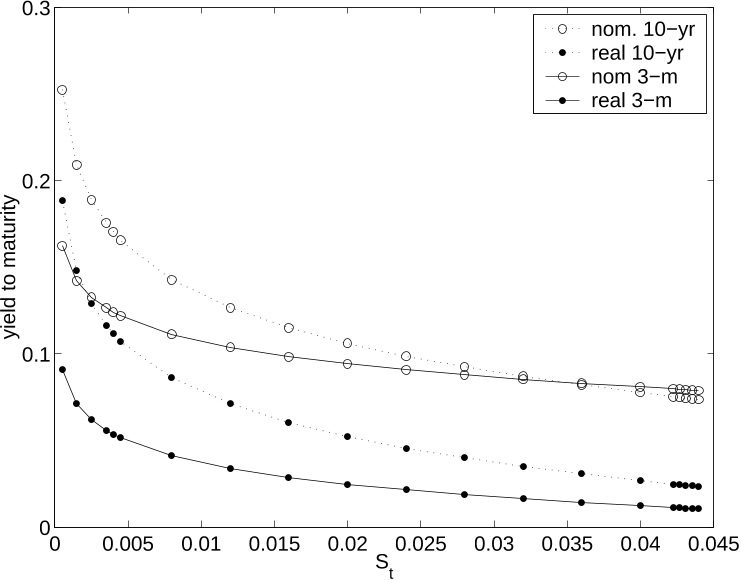





8 citations
...Wachter (2006) allows b to differ from zero to match the upward-sloping yield curve for nominal Treasury bonds....
[...]
8 citations
...In order to study the quantitative implications of the model for bond prices and the termpremium, I assume that the domestic agent has preferences with external habits, as studied by Campbell and Cochrane (1999) and Wachter (2006). These preferences imply that the agent values her consumption relative to a slow-moving reference level, which can be interpreted as a habit or as the aggregate consumption in the economy. This feature generates counter-cyclical risk-aversion, which allows the model to reproduce a large, positive, and counter-cyclical term-premium, as observed in the data. I use this model to investigate how much of the drop in long-term yields from the first quarter of 2000 to the end of 2007 can be explained by foreign purchases of U.S. Treasuries and how much of this decline was due to changes in the term-premium.11 Since I study an endowment economy, I decompose observed consumption growth into two components: foreign purchases and the difference between observed consumption growth and foreign purchases. The goal of this exercise is to quantify the response of yields to the variation in consumption growth attributable to foreign purchases. First, I show that the model delivers realistic implications for the yield curve. I estimate the stochastic process for the exogenous variables using U.S. data, and calibrate the preference parameters to match the average term structure of yields and their standard deviation in the data. I use this framework to investigate the impact of foreign purchases on long-term yields and the term-premium. To do so, I compute the implied paths of long-term yields and the term premium when the domestic agent faces the paths of inflation, interest rates and consumption observed in the data between 2000 and 2007. Then, I contrast the yields implied in this case with the ones obtained under the counter-factual scenario in which foreign holdings stayed constant relative to GDP at their beginning-of-period’s level.12 The difference between the yields implied by these scenarios, suggests that foreign purchases reduced long-term yields by 5.5 percentage points over this period, and that the term-premium explains half of this effect. These numbers imply that every 100USD billion of foreign official purchases of U.S. Treasuries decreases long-term yields by 50 basis points, a number well in-between estimates from previous empirical studies.13 Foreign purchases reduce bond yields in the model through their impact on expected consumption growth and consumption growth innovations. On the one hand, foreign purchases increase 11 I purposely exclude the financial crisis when the Fed instrumented its Large Scale Asset Purchases program. Thus, I avoid confounding the effects of foreign purchases of U.S. Treasuries with those of purchases by the Fed. 12 I assume a specific sequence of shocks to foreign holdings such that the stock of holdings over GDP stays constant. 13 See, for example, Warnock and Warnock (2009) and Beltran, Kretchmer, Marquez, and Thomas (2013)....
[...]
...39 The grid points are carefully chosen so that the model without foreign purchases replicates closely the results in Wachter (2006). are solved for each grid point and then these prices are linearly interpolated when I simulate the economy for 440,000 quarters, burning the first 40,000…...
[...]
...7 See, for example, Campbell and Cochrane (1999) and Wachter (2006). intertemporal consumption profile....
[...]
...The sensitivity of surplus consumption to consumption growth innovations, λ(st), is defined as in Wachter (2006): 26 In the time-additive, isoelastic, expected utility, the elasticity of intertemporal substitution is given by 1/γ, the inverse of the constant relative risk aversion coefficient....
[...]
...51 Notice that Et (q a t+1ft+1 − q t ft) = q tEt (∆ft+1) + ftEt (∆q t+1) + Et (∆ft+1∆q t+1) 52 This is exact in the case that consumption is a random walk as in Wachter (2006). In this model it is only an approximation, since consumption has a small predictable component and there is non-zero foreign debt....
[...]
8 citations
8 citations
8 citations
10,019 citations
...In addition, results available from the author show that price–dividend ratios have the ability to predict excess returns on equities, just as in the data (Campbell and Shiller, 1988; Fama and French, 1989), and that declines in the price–dividend ratio predict higher volatility (Black, 1976; Schwert, 1989; Nelson, 1991)....
[...]
...…from the author show that price–dividend ratios have the ability to predict excess returns on equities, just as in the data (Campbell and Shiller, 1988; Fama and French, 1989), and that declines in the price–dividend ratio predict higher volatility (Black, 1976; Schwert, 1989; Nelson, 1991)....
[...]
7,014 citations
6,141 citations
...Thus, the model can fit the equity premium puzzle of Mehra and Prescott (1985)....
[...]
4,110 citations
...In addition, results available from the author show that price–dividend ratios have the ability to predict excess returns on equities, just as in the data (Campbell and Shiller, 1988; Fama and French, 1989), and that declines in the price–dividend ratio predict higher volatility (Black, 1976; Schwert, 1989; Nelson, 1991)....
[...]
...…from the author show that price–dividend ratios have the ability to predict excess returns on equities, just as in the data (Campbell and Shiller, 1988; Fama and French, 1989), and that declines in the price–dividend ratio predict higher volatility (Black, 1976; Schwert, 1989; Nelson, 1991)....
[...]
3,886 citations